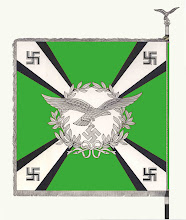Caliber: 7.92x57mm Mauser (also known as 7.9mm Mauser or 8mm Mauser)Weigth: 10.5 kg on bipod, empty
Length: 1219 mm
Length of barrel: 627 mm
Feeding: belt, 50 or 250 rounds; double drum magazines, 75 rounds.
Rate of fire: 900 rounds/min
Muzzle velocity: 755 m/s (may vary depending on type of ammunition used)
Maschinengewehr-34 (Machine gun, model of 1934), or MG-34, is known as a main infantry support weapon of the Wehrmacht (Hitlers' German Army) through first half of the World War 2, and main vehicle (tank) machine gun of the same during the whole war. MG-34 also is nototious for being the first ever true Universal machine gun, that could be used as a light machine gun from bipod, as a sustained fire, medium machine gun on tripod, as a tank or AA gun.
MG-34 was designed in the early 1930s by the team lead by Louis Stange at Rheinmetall, leading German arms manufacturer at that time. Final design, adopted for service in 1934, incorporated numerous features from experimental prototypes built by Rheinmetall, Mauser-werke, and others. As was requested by German army, it was a truly universal machine gun, capable of different roles. It was put into production circa 1935, and remained an official MG of the Wehrmacht until 1942, when it was oficially replaced my more reliable and cheap MG-42. But, despite this, MG-34 continued to serve untill the end of WW2, mostly as a tank gun, because it was better suited for this role than the MG-42.
MG-34 is a recoil-operated, selective fire weapon. It uses short recoiling barrel with muzzle recoil booster which also serves as a flash hider. Barrel locking is achieved by the rotating bolt head, with interrupted threads locking lugs, that lock into the barrel extension . Bolt head has a set of rollers, located just behind the lugs. These rollers are used to rotate bolt heads to lock and unlock, when riding inside the curved grooves, cut on the inner walls of the receiver. Rollers also act as a bolt accelerator, when bolt unlocks, due to inter operation with the barrel extension. Tubular receiver is linked to the tubular barrel sleeve by the swinging stud, set at the right side of the receiver, so receiver can be turned up and to the right relatively tho the barrel sleeve, thus exposing the barrel rear end. When receiver is opened, barrel can be simply withdrawn from its sleeve to the back, but when barrel is hot, this requires some sort of the heat protection, so MG-34 operator had to use asbestos glove which was a standard acessory to the gun. MG-34 usually was issued with belt feed, which was operated by the stud on the top of the bolt body. Belt feed could be easily set up to take the belt from the left or from the right side of the gun. With special replacement feed cover, a double-drum, saddle-type 75 rounds magazines can be used. MG-34 was a selective fire weapon, with mode of fire being controlled by dual trigger. A pull on the upper part of the trigger produced single shots, while a pull on the lower part produced full auto bursts.
Being an universal MG, MG-34 could be used in different configurations. As a light MG, it was used from light, folding bipods, which could be set up either under the muzzle or under the guns' center of gravity, allowing for better stability or better field of fire, respectively. In this mode MG-34 was usually fed from 50-rounds truncated-cone belt boxes, made of tin. Belt boxes were cillped to the receiver and allowed the gun to be carried loaded withouth dangers of belt being jammed.
In sustained fire role, MG-34 was mounted on the special tripod of very complicated and expensive design, called Lafette-34. This tripod allowed for direct or indirect fire missions , and was equipped with recoil dampers, special fire control unit and an optical scope mount. With the use of the special adapter, this tripod also can be used for antiaircraft role. For dedicated air-defence missions a special, lightweight AA tripod was also available.


No comments:
Post a Comment